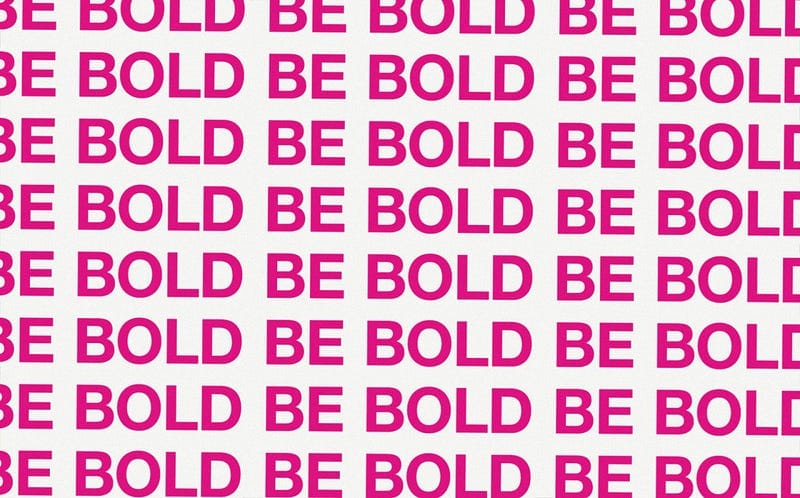One year on as a Service Designer in the BC Government
Reflections on the year and the organization

At the end of 2020, I faced a difficult choice: 1) Go back to the job and city I loved (London) and return to the UK Government to work for GDS, or 2) move closer to my family and pursue a different opportunity in the Canadian government landscape. I chose the latter and the 11th of January 2022 marks one year since I joined the BC Government as a Service Design Lead.

I’ve been feeling mixed emotions as I approach this milestone so it feels important to sit with and reflect on the year I’ve had.
What’s gone well
Overall my time with the BC government has been really positive. I’d been feeling undervalued before joining, so it’s been a refreshing change to feel empowered and trusted, and to regain confidence and momentum in my work. I would even say I’m thriving.
Some of the highlights:
- I wrote regular weeknotes and one article on cross-government communities. After years of not writing anything beyond research plans and emails, sharing my work openly has been 10% scary and 90% rewarding. To be totally honest, writing again has felt really wonderful. If you’re on the fence about writing more (like starting weeknotes or sharing your work), I would encourage you to give it a go. Even if no one reads it (which is a real possibility), I’ve found it’s been so helpful to be able to read through everything I’ve done this year. Do it for your future self.
- I developed a user-led roadmapping approach and mural board that gained a lot of praise and notice in my division (it’s also been copied several times as a template for other teams which I love.)
- I developed a simple and clear definition of what our service is through a number of workshops and research sessions. My hope is that this has inspired our team and leaders to think of it in simple, direct terms too, but that’s difficult to measure. I think we still need to work on being more concise (our public service definition document is 1,253 words.)
- I re-launched the Human Centred Design community and brought together a lovey group of co-organizers to help me out in this. Our kickoff meeting in November had about 100 attendees.
- I continuously and doggedly advocated for user needs, plain language and agile change. One of the things I have made a point of doing is asking people to define jargon they use, even when I know what it is, even when I worry it makes me look dumb. And honestly, I can’t say I’m moving the dial much but I hope I am planting some seeds as I go by inspiring others to simply their language and think about issues from different perspectives.
- I started a full-stack developer course which I’m still working my way through. Working tech, I’ve wanted to do this for years. I’m so grateful to my manager for suggesting it and supporting me in it.
- I attended Service Design in Government, the DotGov Design Conference and FWD50 — all were quite different but very inspiring and thought provoking.
- I got over my shyness and new person awkwardness to interview every person on my team. It was probably one of the most useful things I did, and I loved every chat I had. This makes me think that this is something I should do quarterly, or at least yearly.
- Finally, I’ve been told a few times this year that things I’ve done or said or presented are too bold, to direct, too challenging. I’ve been asked to filter, to spin things in a more positive light. And to be honest, I take immense pride in that. Bold people are badly needed in government, to challenge the way things are and ask difficult and different questions. I’ve always wanted to be one of the bold people, but felt I wasn’t charismatic or loud or extroverted enough. The people who say this to me are sometimes apologetic about this feedback, but I want to tell them: Don’t be. It’s a compliment. (That said, I do acknowledge that being bold should be done in a respectful and diplomatic way, and I sincerely hope I haven’t come across as a tone deaf jerk to anyone.)
What’s not gone as well
When I think about the work I actually shipped this year, I’m disappointed that I haven’t done more. I haven’t achieved many of the things that the me of January 2021 would have expected. And when I think about why, there’s an obvious reason that sticks out.
In my current role, I am responsible for what, in my previous organizations, would be 3–4 full time jobs. The previous digital product teams I’ve worked on at CDS and GDS all had at least one of each: researcher, service designer, interaction designer and content designer (and many teams had more than this.) The current makeup of our product team is: 13 to 15 tech people, 1 scrum master, 1 PO and … me. I love my team and I have so much respect for the technical people I work with, but the balance is off and it makes it difficult to do all the things I wish I could do. It’s also kind of lonely, although forming connections with other service designers in government has helped with this. Anyway, thinking about it from this perspective has made me realize that I can’t measure my productivity based on my previous experience, as the context is much different here.
Added to this is the reality that we are still living in a global pandemic which means childcare for my 2yo and 6yo is extremely unreliable, and I had to organize a very long and stressful cross-country move. I’m not one to make excuses or shirk responsibility, but these struggles are not insignificant.
Additional challenges I’ve faced:
- I’m trying to build a culture of research in a team that’s not used to it. This hasn’t been smooth. I’ve had to have difficult conversations, set firm boundaries and educate people on basics in a way that doesn’t seem condescending. I don’t know if I’ve done a very good job of this, as I’ve always worked in places where empathy and user focus were built in by people who came before me.
- I’m trying shift the user-centred culture dial from “consultancy” (where we make decisions and ask users for feedback after) to “co-design” (where users lead the decisions.) I feel like I’m lacking the confidence, capacity and influence to do this in a meaningful way, so I question whether my design and research practices are really making a difference.
- Outdated work tools! I know this is a #firstworldproblem but in terms of tech I feel like I went back in time when I started here. Although I‘m lucky to have a macbook pro, I find it so difficult to use Microsoft word and outlook (so many error messages and random things that suddenly don’t do what they are supposed to do!) Teams is fine but not collaborative, and I really, really miss the amazing sense of community that came from using slack (yes, teams has channels but they’re not the same, people don’t interact with them.)
My 2022 hopes for myself
I have a few tangible things I want to accomplish in 2022:
- I want to finish my Developer course
- I want to build strong and steady momentum in the HCD community
- I want to launch a plain language website for our service that makes clear what we do and don’t do, based on user needs and user input.
- I want to make co-design the default in my team when it comes to making design decisions
- I want to build a strong culture of research in my team, by involving them more and making more room for robust discussion
Less tangibly, I want to play a part in large-scale organizational change in the BC Government. I see so many opportunities to make government work better for both citizens and pubic servants.
My personal 2022 hopes for the BC government
(**important caveat here, these are just my own opinions, as someone who is relatively new and not a leader in the BC Gov. I say these things based on my own experience working at multiple government orgs, but acknowledge my own limited understanding of the complexity of this org**)
In research, I sometimes ask people what they would do if they had a magic wand and could change anything. These would be my magic wand items, the things I would change if I could:
- We need true multidisciplinary teams in every ministry, on every product. We can’t add a single designer to a team and call ourselves “user centred.” Design, content and research are separate, full-time jobs.
- Relatedly, we need to solve the digital talent and capacity problem at scale. (Honey Dacanay talks about this in more detail in her own year-end reflections.) In the research I do with product teams, I hear this again and again: “We can’t hire people to do our digital work, so we rely on short-term contracts. Then they leave and everything gets forgotten.” I know my colleagues at the Exchange Lab are doing excellent work on this, as are many other teams and ministries, but unless I’m missing something, I’ve yet to see this prioritized at a government-wide scale.
- Maybe it’s just me, but from my (limited) perspective, it’s difficult to point to a central agency who is clearly and obviously taking ownership of digital transformation — Digital feels fragmented, like a problem many are solving in silos. In my division, we are working on important topics like digital funding, standards, capacity and platforms, but even from within this group I don’t have a lot of understanding on what changes are coming, what these changes will look like in practical terms, or how this will scale to the rest of government. There are also some crucial pieces — for example, the design system and cross-government communities of practice— that nobody owns, so people at the working level are taking them on off the side of our desks. Honey Dacanay talks about the federal government needing a Coherent Central Agency leadership, noting “without an aligned core, the different organizations operate with separate theories of change that usually reflect only their own organization’s remit.” Coming from Government Digital Service, I agree wholeheartedly with this and know how powerful a central agency can be for creating better outcomes for citizens. What if we could combine the innovation and skills of amazing teams like GDX and the Exchange lab to create one centralized digital agency to empower teams and enable consistent, high quality service delivery across all government sectors?
- Relatedly, I think we need design leadership at the top, in every ministry (I think we need Tech leadership at the top too, but since I’m in design I will focus on that.) There are a handful of amazing design leaders in this government, but they seem to have a limited view into their own division or sector. What I believe we need is design leaders to have a say in the important decisions being made, and to have a zoomed out view in order to see the big gaps and the systemic problems that design can solve, as well as the opportunities to solve problems across sectors. Working level designers like me don’t have to capacity or influence to solve the systemic issues we come across daily in our work, so we need to move design thinking upward and upstream, to where decisions are made. In practice this might mean heads of design in every ministry, who work with each other and oversee all the design functions in their business area.
- Finally, our leaders must recognize the need to — as GDS says — do the hard work to make things simple, not just for citizens but for public servants. This mean investing in solving the complex, uncool problems like procurement and overzealous approval processes, and empowering teams to make meaningful changes in these areas. If you haven’t already, please read Paul Craig’s excellent blog post on this: Paperweight: a cautionary tale of onerous oversight. To quote: ”We need to create space for teams to use their judgement and lower the cost of experimentation if we are to realize the ideal of a truly responsive, citizen-centric government.”
And, as Sean Boots mentions in his eye-opening, must read article “A bleak outlook for public sector tech”, we need a sense of urgency. Each day that we don’t do something to move to needle, we are falling farther behind other governments in Canada and beyond.
I know that there are people and teams who are already working to some or perhaps all of these big, complex problems, so I would challenge all of us in the BC Gov to work more openly and cohesively, across sectors, ministries and teams. I see tremendous talent and opportunity here, and the potential to become an even better digital service provider for citizens and each other.


Comments ()